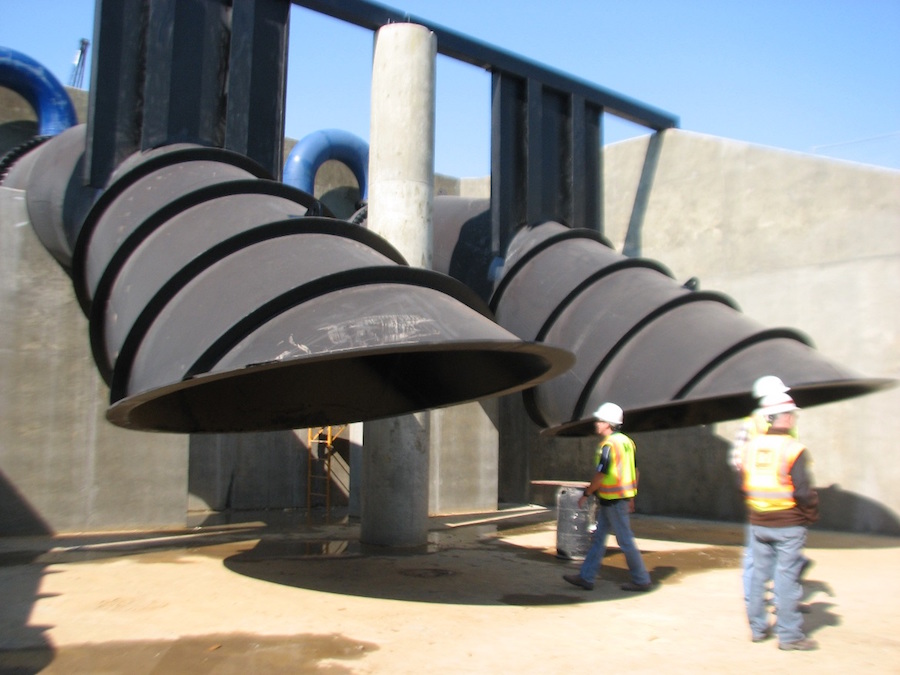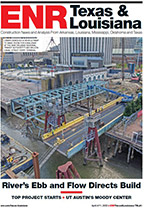The U.S. Army Corps of Engineers is now roughly a year away from completing a six-year, $100 million drainage project in New Orleans.
Under the Southeast Louisiana Urban Flood Control Project (SELA), the Pump to the River project broke ground in 2011 with the goal of improving drainage in the communities of River Ridge and Harahan. On May 8, 1995, the area experienced nearly 2 ft of rain, which overwhelmed the Soniat Canal and overflowed into surround neighborhoods and flooded thousands of homes.
The project aims to reduce volume and flow in the canal by rerouting the discharge to the Mississippi River instead of Lake Pontchartrain. The new system spans 10,000 ft from the base of the canal to the river, but reduces the distance the water has to flow by three miles.
Rachel Calico, project manager at USACE, says the project was divided into five different segments, each with its own contractor. Those pieces have included an intake basin at the base of the canal, a pump station with three diesel pumps, two contracts for the installation of discharge tubes and a discharge basin. Calico says one challenging aspect of the project was its long term and footprint which spans nearly two miles. Contractors encountered many subsurface obstructions near the river, and the drainage pipes also had to cross a major highway.
"The project has been going well. We've been working closely with the City of Harahan and Jefferson Parish to minimize inconveniences during the construction," says Calico.
ENR profiled the project back in October 2014.
One unique element of the Pump to the River project is a siphoning system that uses pressure and gravity to pull water up and over the 17-ft-high level through 84-in diameter pipes. Calico says the discharge basin is now complete, but has yet to be connected to the system because of high water in the Mississippi River. All other segments of the project are under construction and nearing completion within the next year.
The corps has frequently contended with rising river levels that have forced them to halt work on the discharge basin and other parts of the project. Once waters reach a certain elevation, the corps performs inspections of the levees twice per week. It also has a requirement that construction within 1,500 ft of the river stop work or apply for site-specific waivers.
"They were unable to work once the Mississippi River reached 11 ft at the Carrollton Gauge and this has occurred on numerous occasions," says Calico.
The project is targeted for completion in the summer of 2017, pending weather and high river events.


